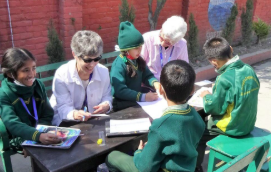Learning a new language doesn’t have to happen only in a classroom. Volunteer work offers a powerful, real-world opportunity to build language skills while making a positive impact in the community. By interacting with native speakers and immersing yourself in meaningful conversations, you can improve fluency and confidence naturally. Here are friendly and effective ways to use volunteer work as a path to language learning.
1. Choose the Right Volunteer Opportunity
Look for roles that involve regular communication. Volunteering in community centers, cultural events, shelters, or educational programs can help you interact with native speakers. Whether you assist at a food bank, tutor children, or help with translation tasks, choose something that aligns with your interests and language goals.
2. Practice Listening and Speaking Daily
While volunteering, pay close attention to how people speak. Listen for common expressions, tone, and pronunciation. Don’t be afraid to ask questions or repeat phrases. Each interaction offers a chance to pick up vocabulary and natural sentence structures.
3. Use Context to Understand Meaning
In a real-life volunteer setting, you’ll often understand meaning through actions, gestures, and surroundings. This helps reduce the need for translation and encourages direct thinking in the language. Over time, you’ll become more confident in grasping meaning from context alone.
4. Learn Cultural Nuances
Volunteering allows you to experience culture firsthand. You’ll hear how language is used in different social situations and learn respectful ways to express yourself. Understanding cultural context enhances your language learning and deepens your communication skills.
5. Reflect and Reinforce What You Learn
After each volunteer session, take a few minutes to reflect on new words or phrases you heard. Write them down in a notebook or language journal. Repeating them out loud or using them in your own sentences helps reinforce memory.
6. Build Meaningful Relationships
One of the best parts of volunteering is forming connections. Building friendships gives you more reasons to communicate and more chances to practice informally. Friendly conversations in a volunteer setting often feel more relaxed and supportive than formal lessons.
7. Combine with Other Learning Methods
While volunteer work provides immersive practice, it works best when paired with other tools like language apps, books, or courses. This combination helps you build a strong foundation and grow your skills from multiple directions.
Conclusion
Volunteering is a heartwarming way to learn a language. It brings real conversation, cultural insight, and genuine human connection into your learning process. By offering your time and care to others, you not only give back but also grow as a language learner. Embrace the experience, stay open to learning, and enjoy the journey toward fluency.


